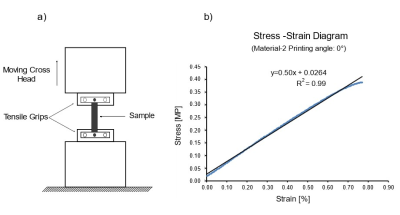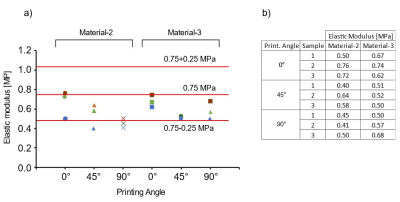Isil Unal1, Duygu Dengiz2, Eckhard Quandt2, Mona Salehi Ravesh1, Jan-Bernd Hövener3, Mariya Pravdivtseva1, and Olav Jansen1
1Department for Radiology and Neuroradiology, University Hospital Schleswig-Holstein, Campus Kiel, Germany, Kiel, Germany, 2Institute for Materials Science, Faculty of Engineering, University of Kiel, Germany., Kiel, Germany, 3Section Biomedical Imaging, Molecular Imaging North Competence Center (MOIN CC), Kiel, Germany
1Department for Radiology and Neuroradiology, University Hospital Schleswig-Holstein, Campus Kiel, Germany, Kiel, Germany, 2Institute for Materials Science, Faculty of Engineering, University of Kiel, Germany., Kiel, Germany, 3Section Biomedical Imaging, Molecular Imaging North Competence Center (MOIN CC), Kiel, Germany
The models produced using various resins were effective in obtaining a value close to the elastic modulus of the real brain artery. Thus, more realistic results can be obtained in in vitro flow measurements usind 4D Flow MRI.

